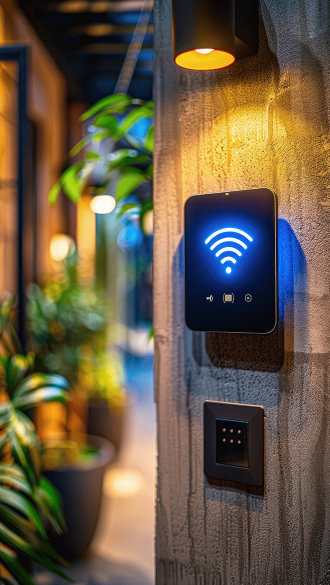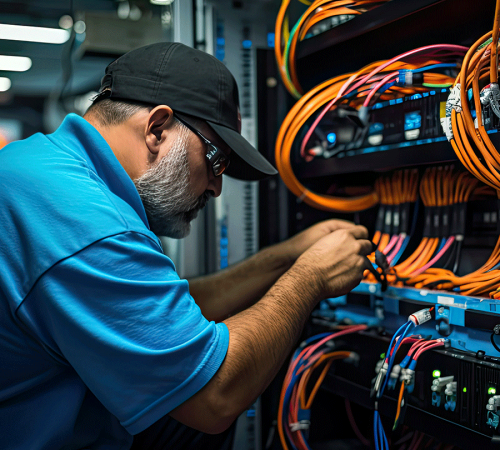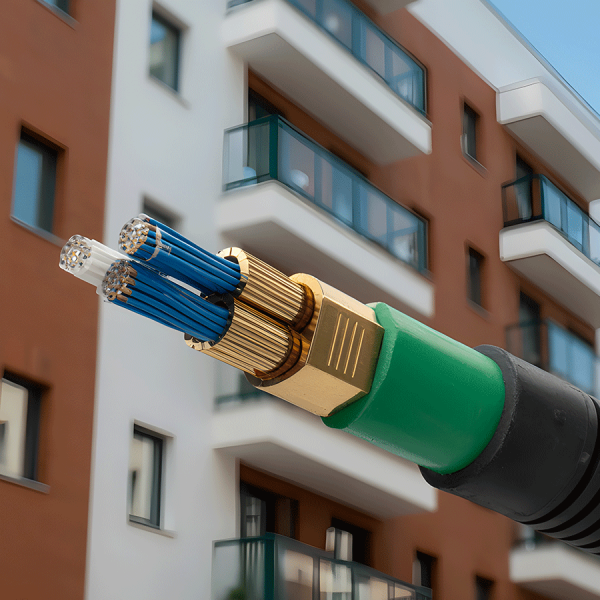Structured Cabling
Deliver flawless connectivity from end to end with Groove Technology Solutions’ structured cabling services.




Solid Connectivity From the Ground Up
In today’s ever-changing digital landscape, a robust and reliable network infrastructure is crucial to your success. At Groove, we provide structured cabling installation designed to optimize operations, enhance communication, and future-proof your technology investments. Our expert in-house team delivers end-to-end services including design, project management, installation, and ongoing customer support for all your cable, connector, and hardware needs. You can trust that any structured cable we put in today won’t be outdated tomorrow.
- Fiber Optic Cabling
- Horizontal Cabling
- Outside Plant Cabling
- Telecommunications
- Backbone or Vertical Cabling
- Entrance Facility Cabling
A Strong System Foundation for Continued Success
Unmatched Reliability
Top-of-the-line design and installation for flawless connectivity
Strictly Adheres to Industry Standards
We use high-quality materials and pay meticulous attention to detail
Designed With Future in Mind
Position your property as a leader in modern-day innovation
Lighting-Fast Speeds
Dedicated wiring that makes running your organization a breeze
A Unified System Solution
Connect multiple systems to streamline operations with ease
In-House 24/7 Support
Our team is always available to deliver the utmost satisfaction

Structured Wiring To Revolutionize Your Property
Installing a structured cabling system the right way is essential to building a reliable, future-ready communication infrastructure.
A well-executed cabling system installed by Groove ensures seamless communication across Wi-Fi networks, TV, and phone systems, supporting day-to-day operations while giving your business the flexibility to grow, upgrade, or reconfigure without disruption. With greater uptime and minimal interference, structured cabling increases productivity and minimizes costly network interruptions.
At Groove, we take a unified approach. In many projects, cabling responsibilities are split between electricians and various subcontractors (AV, cameras, access control, etc.), leading to miscommunication, finger-pointing, and delays both during installation and long-term service. By managing the entire process ourselves, we eliminate those complications, ensuring streamlined communication, clear accountability, and faster resolution of any issues.
Properly designed and installed cabling supports high bandwidth demands, improves data speeds, simplifies maintenance, and enhances system security. Structured cabling isn’t just wiring; it’s the backbone of your digital infrastructure, and we make sure it’s built to last.
STRUCTURED CABLING FAQS
Frequently Asked Questions About Structured Cabling
What is a structured cable?
A structured cable refers to the standardized wiring infrastructure used in buildings or campuses to support multiple hardware systems and communication technologies. It is part of a larger system known as structured cabling, which provides a well-organized, flexible framework for Wi-Fi networks, TV, and phone systems transmission across a network.
For which industries do you provide structured cabling services?
Groove provides custom structured cabling services to hospitality, multifamily, senior living, and government/commercial operations. Connect with us today for a quote for your property.
What is the difference between structured and unstructured cabling?
Structured cabling is a standardized and organized approach to designing and installing a network’s physical infrastructure. It uses labeled, neatly arranged cables and components that follow industry standards. In contrast, unstructured cabling refers to a more chaotic or ad hoc setup, often with tangled wires, inconsistent types of cables, and no clear labeling or design, making maintenance and troubleshooting difficult.
What are the 6 components of structured cabling?
The six main components of a structured cabling system are:
- MPOE (Main Point of Entry) – Where the fiber line or other service line from as ISP enters the building or campus.
- IDF (Intermediate Distribution Frame) – A space for housing equipment for cameras, access control, network, and AV.
- Backbone Cabling – Cabling that connects equipment rooms, entrance facilities, and telecommunications rooms, often spanning floors or buildings.
- Telecommunications Room (or Closet) – An enclosed area containing telecommunications equipment and cable terminations for a floor or section of the building.
- Horizontal Cabling – Cabling that extends from the telecommunications room to individual workstations or outlets on the same floor.
- Work Area – The space where end-user devices connect to the network via wall outlets and patch cables.
What does structured cabling do?
Structured cabling provides a reliable and scalable infrastructure for communication systems within a building or campus. It supports the transmission of data, voice, and video across a network, enabling efficient and consistent connectivity. Organizing the network layout reduces downtime, simplifies troubleshooting, and allows for easier upgrades or changes to meet evolving business needs.
Reliable Structured Cabling Solutions for Your Digital Success
Quality structured cabling installation can make all the difference in running your organization. Contact Groove today to learn more or for a quote.